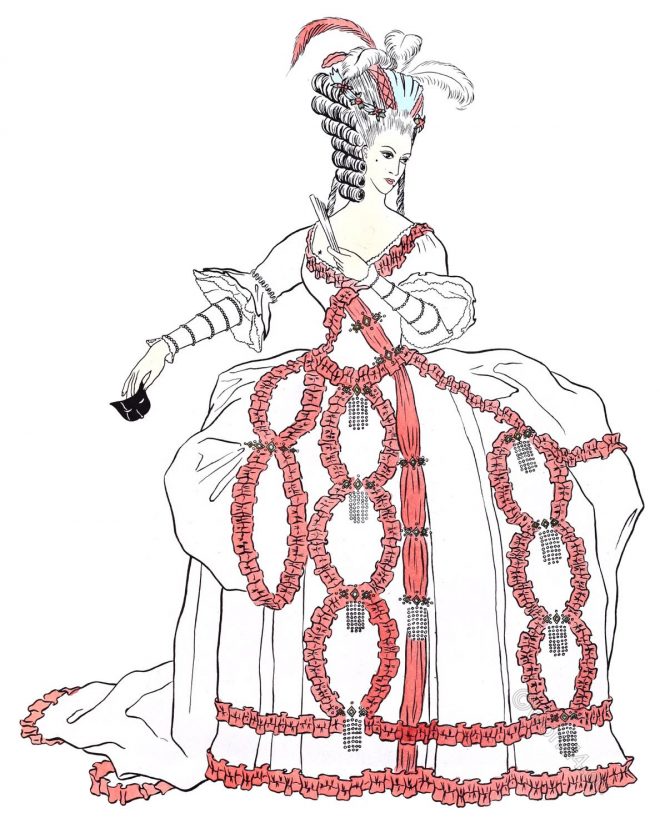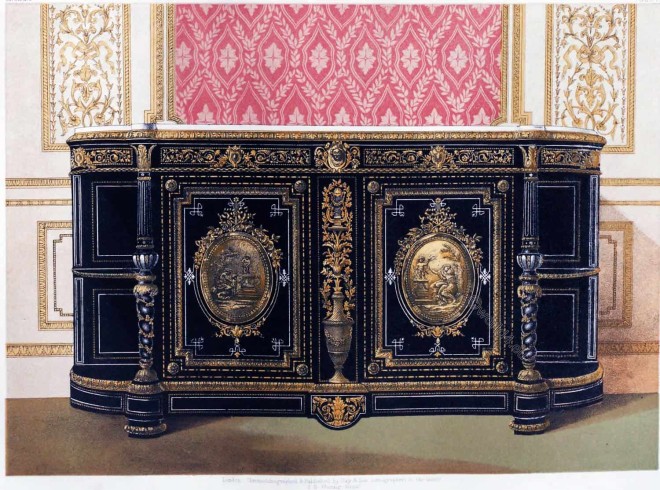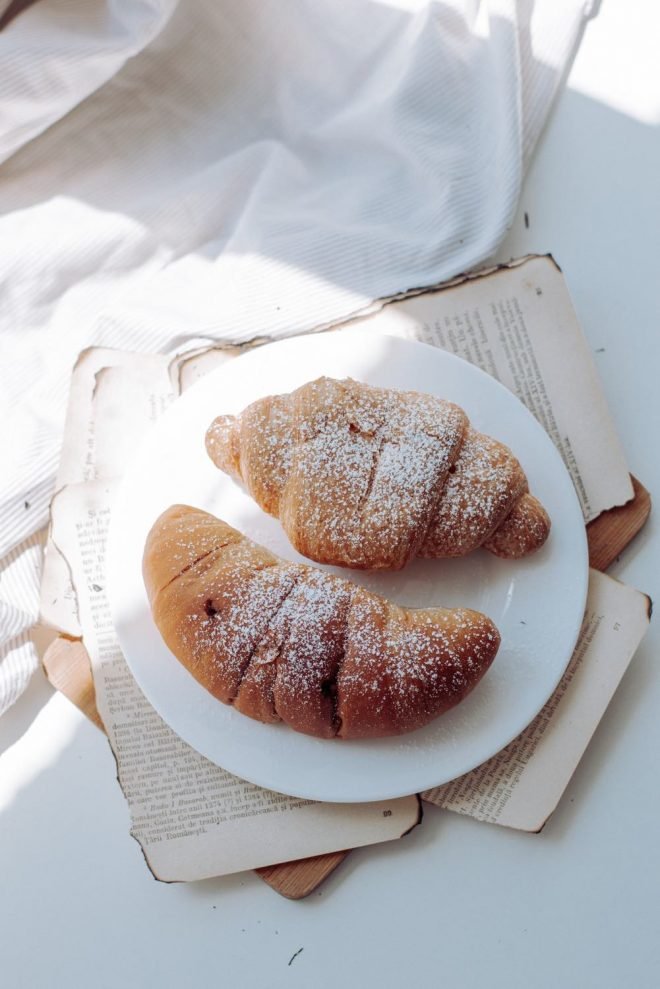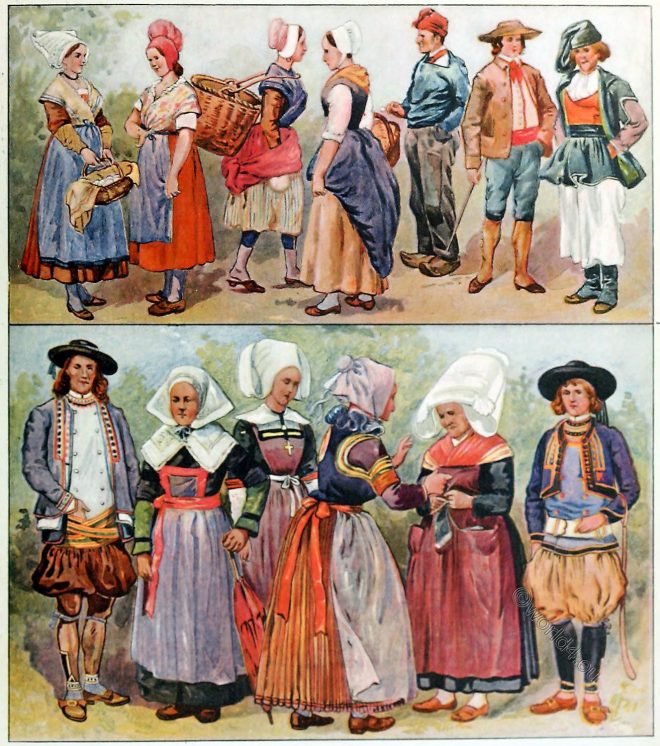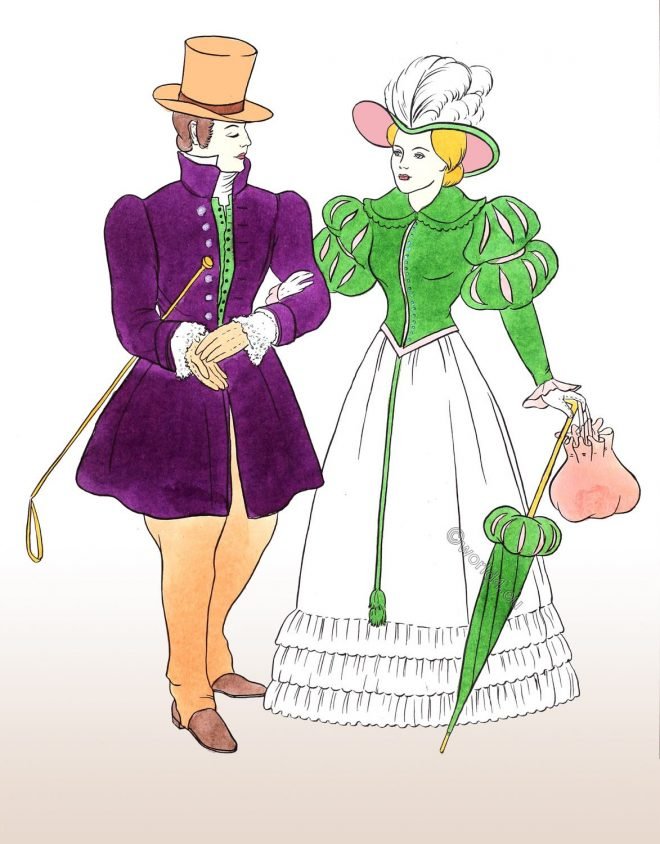This Ballroom costume contains almost every possible exaggeration that could be heaped upon an already overdeveloped style.
Category: France
Parisian chapeaux from present flowery month of May 1867.
Sketches of real Parisian Chapeaux on the racecourse, in the Bois de Boulogne, in the Champs-Elysées, and other promenades.
An embroidered mantle with a cape of very fine point d’Alençon.
A lace worked dress, in circular shape, furnished with a lace cape reaching to the top of the embroidery, of very fine point d’Alençon.
Ebony cabinet in the style of Louis Seize. Victorian period.
Ebony cabinet in the style of Louis Seize. Prize medal for great excellence of design and workmanship in decorative furniture 1862.
France. Historical folk costumes from the Bordeaux area.
France Bordeaux. Folk costumes from Gradignan, Caudéran, Pessac, Laroque, Blaye. First half of the 19th century.
Empire Romantic. Young lady wears a ballroom ensemble of the 1820’s.
History of Costume. Empire Romantic Era of the middle or late 1820’s. Young lady wears a ballroom ensemble. Young man dressed in evening clothes.
The origin of Croissants. The vanished pomps of yesterday.
When Marie Antoinette married Louis XVI of France, she missed her Kipfel, and sent to Vienna for an Austrian baker to teach his Paris confreres the art of making them.
Folk costumes from the different regions of France. 19th Century.
French Folk costumes from Brittany, Normandy, Bourgogne-Franche-Comté, Provence, Hauts-de-France region, Haute-Savoie, Corsica.
A splendid example of the late 1820’s fashion. Romantic period.
The hand bag and parasol illustrate two of the most common accessories of the 19th century.
Empire Romantic period. Formal evening wear. Party dress.
The party dress here shows definite leanings toward the Romantic period, which began with 1815.

